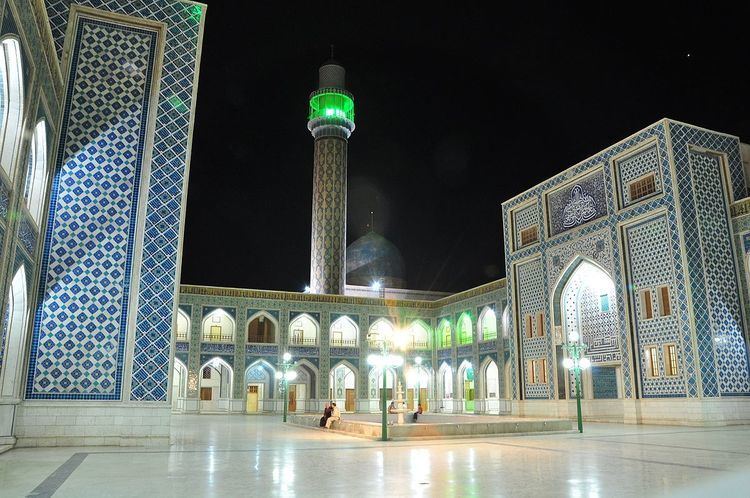Location Iraq
Syria | Date August 2014 – present | |
 | ||
Target Shia Muslims, primarily civilians Attack type Genocidal massacre, ethnic cleansing, forced conversion Perpetrators Islamic State of Iraq and the Levant Defenders Iraq
Syria
Iran
Russia
United States | ||
The genocide of Shia Muslims by the Islamic State of Iraq and the Levant (ISIL) refers to the genocide within its region of control in Iraq and Syria increased following its takeover of parts of Northern Iraq in June 2014.
Contents
- The fall of Mosul 2014
- Attacks against Shias in Bashir
- Destruction of Shia shrines and places of worship
- Genocide claims
- References
Despite being the religious majority in Iraq, Shia Muslims have been killed in large numbers by ISIL. On 12 June 2014, ISIL killed at least 1,566 Shia Iraqi Air Force recruits in the Camp Speicher massacre. ISIL has also targeted Shia prisoners. According to witnesses, after the militant group took the city of Mosul, they divided the Sunni prisoners from the Shia prisoners. Six hundred fifty Shia prisoners were then taken to another location and executed. Kurdish officials in Ibril have reported similar incidents where Sunni and Shia prisoners were separated and Shia prisoners were killed.
Amnesty International has held ISIL responsible for the ethnic cleansing of ethnic and religious minority groups in northern Iraq on a "historic scale", putting entire communities "at risk of being wiped off the map of Iraq". In a special report released on 2 September 2014, it described how ISIL had "systematically targeted non-Sunni Muslim communities, killing or abducting hundreds, possibly thousands, of individuals and forcing more than tens of thousands of Shias along with other minorities to flee the areas it has captured since 10 June 2014". the most targeted Shia groups in Nineveh were Shia Turkmens and Shabak, who have lived together for centuries in Nineveh province, large parts of which have come under ISIL's control.
The fall of Mosul 2014
In summer 2014, Shia properties in Mosul and other ISIS held areas were painted with the letter ر “R” for Rafidah, a derogatory term used to describe Shias by Sunni Muslims. Houses and shops owned by Shias were confiscated by ISIS and given to local ISIS supporters or foreign fighters. Hundreds of thousands of Shia Shabaks and Turkmens fled the cities of Mosul, Tel Afar as well as neighbouring Shia Shabak villages in the Nineveh plain.
Attacks against Shias in Bashir
Thousands of Shias from villages in Salahudin and Kirkuk fled to neighbouring villages in Kirkuk after three Shia villages were attacked by ISIS and at least 40 civilians including children were killed near the town of Bashir.
Destruction of Shia shrines and places of worship
ISIS views Shia Muslims as polytheists and heretics. Therefore, it started a campaign to destroy all Shia shrines, mosques and places of worship in Nineveh and all ISIS-held areas. Reports state that at least 10 Shia shrines and hussiniyas including historical ones in Mosul and Tel Afar were demolished or blown up by ISIS during this campaign. In July 2016, ISIS attacked a Shia shrine during the Muhammad ibn Ali al-Hadi Mausoleum attack, killing anywhere from 56 to at least 100 people, not including the attackers.
Genocide claims
On the 17th of March 2016, United States Secretary of State John Kerry declared that the violence initiated by ISIL against Shia Muslims and others in Iraq and Syria amounted to genocide. He said:
“In my judgment, Daesh is responsible for genocide against groups in areas under its control including Yazidis, Christians and Shia Muslims" - John Kerry
Kerry's statement came the same week the US House voted 383-0 in favor of classifying the atrocities committed by ISIS as a genocide against certain ethnic and religious minorities in its territories.
